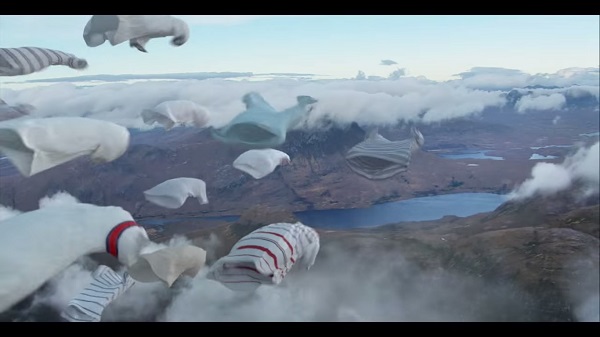How many t-shirts will you own in a lifetime?
I have between 20 and 30 t-shirts in my wardrobe. Tees for every
day, nostalgic tees, tees for sleeping in, tees for the gym, tees I never wear
and one designer tee that I’ve only worn once in a totally food-free environment because it is that precious to me.
Over the course of
your lifetime, you will own and wear about 450 different t-shirts. That’s not if
you’re a collector or crazy t-shirt hoarder - that’s on average.
So it’s raining
t-shirts - why does this matter?
The fashion
industry has seen a huge growth and acceleration in the last twenty years. Suppliers
of natural resources simply could not keep up with the speed and cost at which
consumers were buying the latest trends. As a result, synthetic fabrics have overtaken
cotton and wool as the Number One material used in our garments.
Look here's a graph that proves it:
One of the most
popular synthetic fibres is polyester, which I’m sure you’ll have seen on most,
if not all, of your clothes’ labels. Polyester is quick to produce from
plastics (crude oil) and allows many high-street brands to constantly refresh
and reinvent their stock. But this also means polyester’s carbon footprint is HUGE.
This year we will
produce close to 50 million tons of polyester. If one ton produces 9.52kg of
CO2, that’s 476,000,000kg of CO2 coming to our lungs in 2017. Anyone else
feeling short of breath?
"Fine", I hear you
think, "no more polyester pour moi. Easy!"
Unfortunately, fast
fashion has had a huge impact on the production of natural fibres too. Did you
know it takes 2,700 litres of water to produce a cotton t-shirt? The cotton
industry also uses 25% of the world’s pesticides and herbicides; those harmful
chemicals inevitably end up in our water systems, our food and our bodies.
Last year, 150 billion articles of clothing were produced to satisfy our fashion addiction. It’s
no small problem and, even after production, fashion’s footprint continues to
grow. Dry-cleaning a pair of jeans uses the same amount of energy as heating a home for 387 hours. And those clothes we throw away? Made from plastic, they
take decades to decompose, whilst releasing even more harmful toxins into the
earth.
So it’s no surprise
that the fashion industry is the second biggest polluter of our planet and responsible
for 10% of all carbon emissions globally. Those socks on your feet are basically
Shell Oil.
Thankfully, there are
now many more great clothing brands bucking the pollution trend.
At No Basics, we
work exclusively with Rapanui. Their sustainable and ethical factories cut down
water wastage and are powered by renewable energy so our carbon footprint is
kept at a minimum. The t-shirts are made strictly from organic cotton and
bamboo, meaning no evil chemicals, and are super easy to clean so you can keep your
footprint small too.
 |
| Our tees are as soft as this panda |
Plus our simple,
classic designs also mean a No Basics tee will never go out of fashion. Our t-shirts are for life.
If you want to live
and dress greener, start by recycling old clothes you don’t wear and look out
for synthetic fabrics when you shop. But our biggest tip is this: buy quality
over quantity and help the world kick its harmful fast fashion addiction. Nobody
needs the latest trend when its cost is so high, and hey, just think how
interesting it would be to dress like individuals? ;)
via GIPHY



Comments
Post a Comment